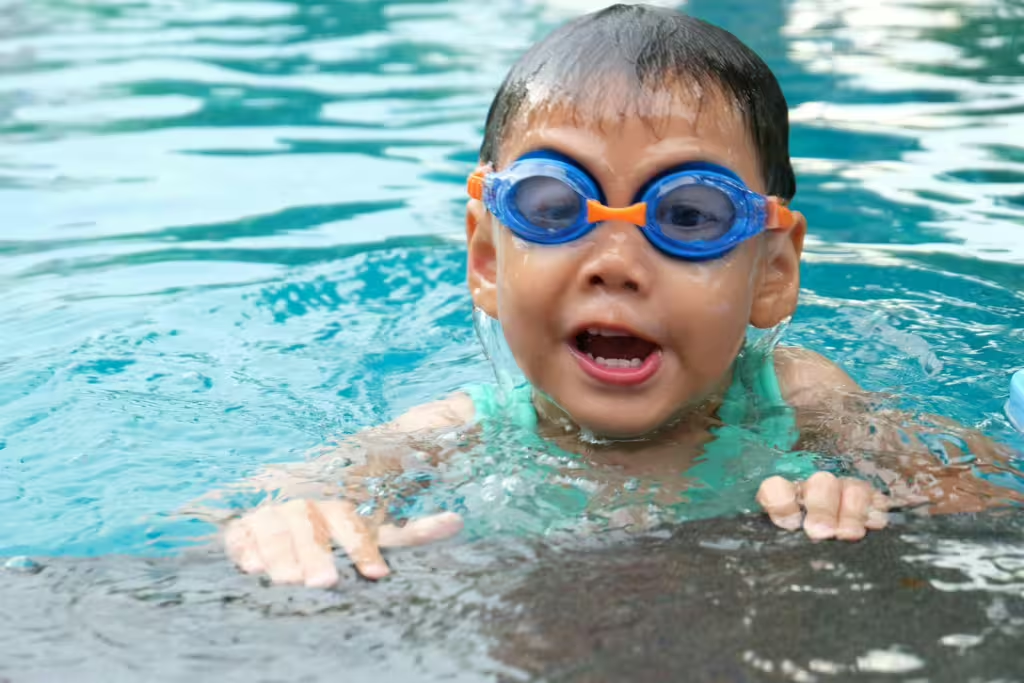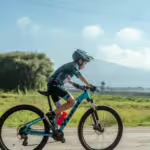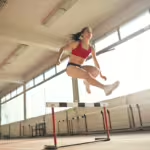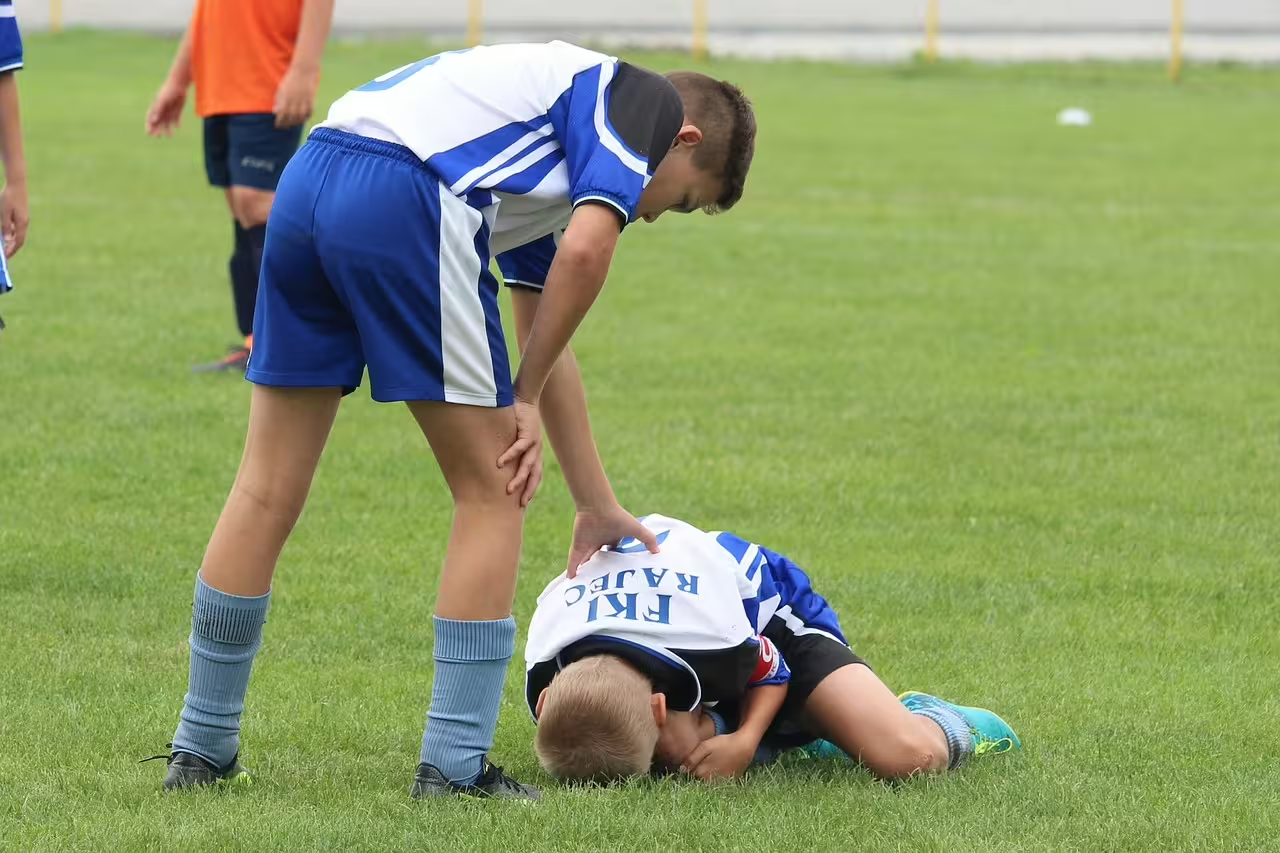To many people and indeed for many people, sports are more than just games that people play. Superfans, lifetime athletes, or even sports enthusiasts all put sports on a sort of pedestal. Many of these people end up losing sight of what really matters, however. They may think that sports matter a great deal yet fail to understand how vital the sports experience is for young children.
Sports offer children a chance to build confidence, make friends, and experience the joy of movement and teamwork. Those benefits are just as important for children with physical, sensory, or developmental challenges…perhaps even more so for those children. For kids who want to play but may not be physically, emotionally, socially, or mentally adept enough to do so, there is a solution; adaptive sports.
Adaptive sports programs provide opportunities for kids of all abilities, so that they too can enjoy the rewards of athletic participation in environments specifically designed to meet their own unique needs. In recent years, evidence has shown that children who participate in adaptive sports often experience improvements in physical strength, coordination, and motor skills. This is all well and good, of course, but we’re not done yet! The advantages of adaptive sports participation go far beyond the physical for these children. Being part of a team or regularly participating in a structured activity can help kids build social skills, develop emotional resilience, and gain a sense of independence and self-worth that they will need as they grow. These experiences can be especially empowering for children who may face daily obstacles in other areas of life.
The thing is, not every adaptive sports program is the same, just as every child is different. These programs come in many forms. Some are modified versions of mainstream sports like basketball, soccer, or swimming, using specialized equipment or adjusted rules to create an inclusive and supportive environment. Others are sports uniquely developed for individuals with disabilities, such as goalball or boccia. In many ways, it is this innate flexibility that allows kids from all walks of life to explore a wide range of activities, at least until they find the one that clicks for them.
In this article, we will explore the top adaptive sports that are available for kids. We will discuss how many of these can be tailored to fit various needs. Worry not, if your child has a mobility challenge, sensory processing disorder, or cognitive difference, there is likely an adaptive sport that fits their needs and will keep their interests. During the course of the article, we will break down what each sport involves, the benefits it provides, and how to find the right program for your child.
What Are Adaptive Sports?
Adaptive sports are pretty easy to define. These are modified versions of traditional sports, designed to accommodate the abilities of individuals with physical, intellectual, or developmental disabilities. The bulk of these sports often involve specialized equipment but can also contain rule adjustments that allow for more inclusive play. Additionally, nearly all of them benefit from the expertise of trained coaches whose job is to create a supportive and inclusive environment for the athletes in their charge.
Special programs run the gamut from recreational to competitive and may be offered by local parks departments, schools, hospitals, and several national organizations like the Special Olympics and Move United.
It’s important to remember that adaptive sports are not just a passing fad, just as they are not simply about inclusion. Adaptive Sports are about creating meaningful, fun, and empowering experiences that help children thrive physically, emotionally, and socially in areas that are often closed off to them by certain societal expectations.
Wheelchair Basketball
Who It’s For: Children with lower-limb impairments, spinal cord injuries, or conditions affecting mobility will do well with wheelchair basketball.
Why It’s Great: Like traditional basketball, the wheelchair version is fast-paced and highly social. This sport builds upper-body strength, hand-eye coordination, and strategic thinking; all baked right into the modified recipe! The game is played on a standard basketball court, though obviously some rule modifications have been made to accommodate the physical challenges of the participants. These rle changes include a certain number of pushes allowed before dribbling and a few others.
What You Need: Players will require a specialized sports wheelchair (often provided by programs), a basketball, and access to a court.
How to Get Started: Parents can look for local wheelchair basketball leagues through schools, hospitals, or national organizations like the National Wheelchair Basketball Association (NWBA).
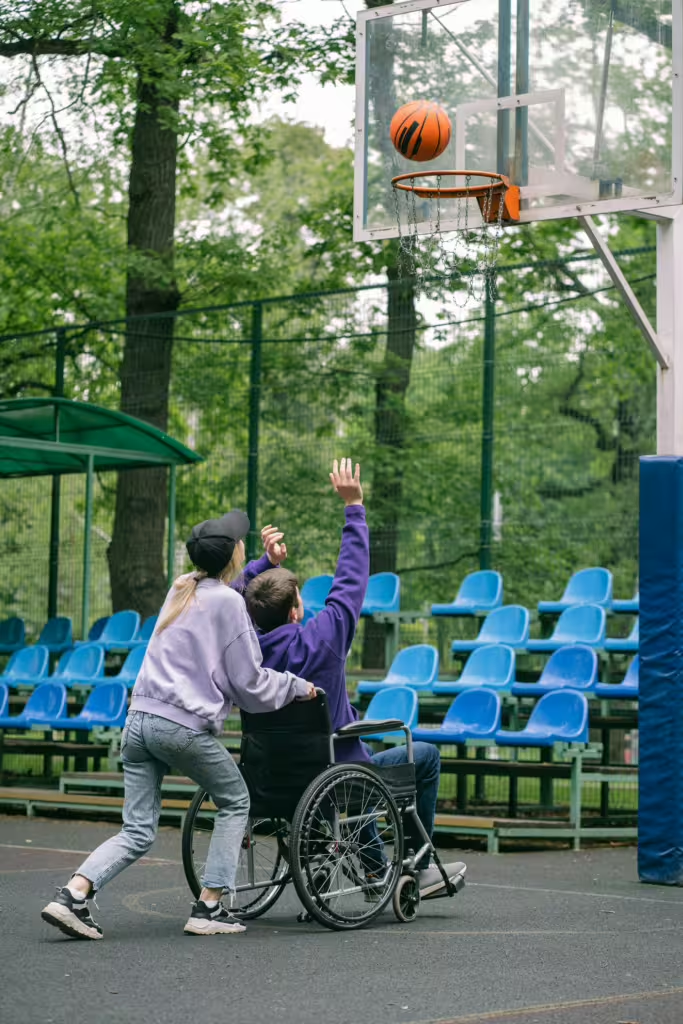
Adaptive Swimming
Who It’s For: Kids with physical, cognitive, or sensory challenges do quite well in adaptive swimming. More importantly, it’s a vital school that evert child should probably learn for their own safety.
Why It’s Great: Swimming is excellent because it is a low-impact, full-body workout that can be tailored to any skill level. It’s also calming for kids with sensory sensitivities. In addition to those benefits, it also helps kids to build endurance, strength, and as we mentioned, essential water safety skills.
What You Need: At the very least, you’re going to need access to a pool and trained instructors with experience in adaptive aquatics. Having a pool at your home is just a bonus here, as it will give your child extra time to practice the skills they learn; with parental supervision, of course.
How to Get Started: Note that many YMCA locations and community centers offer adaptive swimming lessons. Parents can check with local swim schools or therapists who specialize in aquatic therapy.
Sled Hockey (Sledge Hockey)
Who It’s For: Like wheelchair basketball, sled hockey is best for kids with lower-body disabilities, including amputations, spina bifida, or muscular dystrophy.
Why It’s Great: Sled hockey lets children with disabilities or special needs experience the thrill of hockey from a seated position. In this case, it is a sled mounted on two blades. Players use two sticks to propel themselves and control the puck at the same time. This not only improves their coordination and upper body strength, it can help them to feel more confident about what they are truly capable of.
What You Need: Kids will need the titular sled, as well as the requisite sticks, helmet, padding, and ice time, the latter of which is usually provided by the programs themselves.
How to Get Started: Parents can search for programs through USA Hockey’s disabled hockey section or even at local ice rinks. All you need to ask if if the rink offers adaptive sports programs.
Goalball
Who It’s For: This adaptive sport works best for children with visual impairments.
Why It’s Great: Goalball is a Paralympic sport that has been specifically designed for blind and visually impaired players. In this remarkable sport, all players wear eye shades to equalize vision, and the ball contains bells that all for audible tracking. Kids who play experience enhanced auditory processing, teamwork, and spatial awareness.
What You Need: All a kid needs to play is a pair of eye shades, a ball with bells, a court, and some other players!
How to Get Started: Interested parents can connect with the United States Association of Blind Athletes (USABA) or schools and nonprofits that serve visually impaired youth.
Track and Field (Adaptive Athletics)
Who It’s For: Thanks to the fairly open nature of the sport itself, track and field can accomodate children with a wide range of disabilities, including amputations, cerebral palsy, autism, and intellectual disabilities.
Why It’s Great: Track and field offers many event options (sprints, wheelchair races, shot put, long jump) and can be easily modified to meet a child’s needs. For kids who like measuring their success or tracking their advancement, this sport is perfect. It is a great sport for goal setting and individual progress.
What You Need: Athletes require minimal equipment for running and throwing events, though some may need wheelchairs or prosthetics for certain events.
How to Get Started: Parents can look for local adaptive track meets or programs through Move United or local Special Olympics chapters, but they can also ask their child’s school of the track program has any events set up for adaptive training.
Horseback Riding (Therapeutic Riding or Hippotherapy)
Who It’s For: Equestrian sports are excellent for children with autism, Down syndrome, cerebral palsy, anxiety, and sensory processing challenges.
Why It’s Great: Riding helps improve a child’s posture, balance, and motor coordination, while simultaneously fostering emotional bonds with animals. It is a known fact that animal encounters can often reduce anxiety and put people more at ease. These types of encounters can also allay or eliminate certain fears that a child may have when it comes to animals. Note that Hippotherapy is more clinical and therapy-based, while therapeutic riding focuses more on recreational skill development.
What You Need: This one is a bit more difficult for some parents as it cannot be done without a trained horse. In addition to a steed, the child will also need a helmet and an adaptive riding center in which. totrain.
How to Get Started: Interested parents can search the Professional Association of Therapeutic Horsemanship International (PATH Intl.) directory for accredited programs.

Adaptive Martial Arts
Who It’s For: This ancient practice/sport is excellent for kids with autism, ADHD, physical disabilities, and cognitive delays.
Why It’s Great: Martial arts build discipline, focus, and self-control in young athletes. Moreover, programs can be tailored to various needs, offering one-on-one instruction or small classes with visual supports and simplified techniques.
What You Need: All one needs is the will to learn…oh and a dojo with folks who are experienced in working with kids of all abilities.
How to Get Started: Asking around is a great way to get started, as many local dojos and martial arts studios exist in cities the world over. Parents need simply ask local martial arts studios about their experience with adaptive instruction. Many offer trial classes or special sessions for these purposes.
Sitting Volleyball
Who It’s For: This type of volleyball works best for children with lower-limb impairments or amputations.
Why It’s Great: In this version of volleyball, players perform while sitting down on a smaller court with a lower net. As with regular volleyball, the adaptive version emphasizes teamwork, reflexes, and upper body coordination. The pace is quicker than one might expect but the rules are easy enough to learn.
What You Need: A gym, a volleyball, and a lowered net.
How to Get Started: Parents can find clinics through Paralympic organizations or inquire at schools and rehab centers.
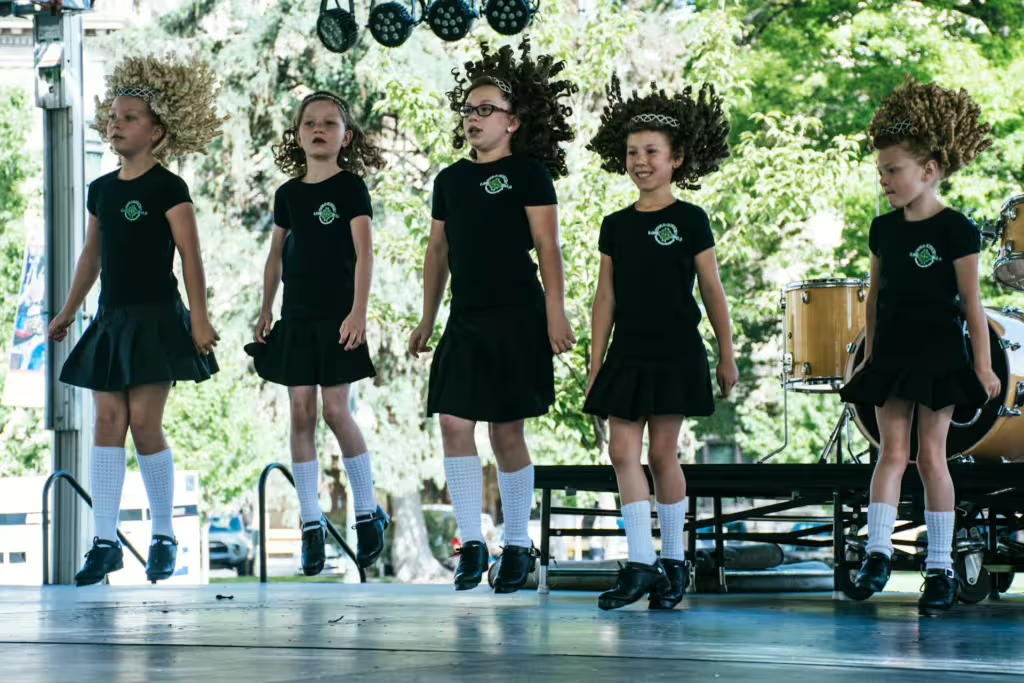
Boccia
Who It’s For: This backyard/family reunion sport is great for kids with severe physical disabilities, including cerebral palsy and muscular dystrophy.
Why It’s Great: Boccia might seem like something your elderly uncles play at every summer barbecue…and it is, but it is also a precision ball sport like bocce, played from seated positions. It fosters focus, strategy, and motor planning. It’s greatest strengths are that it is inclusive of players, including those with high support needs, and that it can be played at recreational or competitive levels.
What You Need: A set of boccia balls is easy enough to optain and will likely last for years. After that, all you need is a smooth playing surface.
How to Get Started: Programs are often available through schools, therapy centers, and local chapters of adaptive sports organizations. That said, the truth is you don’t really need to find a program for this, all you need is a few folks and a desire to have a good time playing games.
Dance and Movement Classes
Who It’s For: Children with autism, Down syndrome, developmental delays, and sensory integration challenges all benefit from dance classes and exercise.
Why It’s Great: Dance is fun, enhances rhythm, bolsters coordination, and allows for self-expression. Adaptive dance classes often use visual schedules, sensory-friendly music, and routine-based instruction to support various learning styles for children.
What You Need: All one needs to dance is a beat and a song in their heart…also some comfortable clothing and an inclusive dance studio might not go amiss.
How to Get Started: Parents can seek out inclusive or adaptive dance programs through local studios, recreation centers, or organizations like the American DanceWheels Foundation.
Cultured Athlete Says…
As you can see, adaptive sports do more than promote fitness. They nurture a child’s social skills, boost their confidence, and enhance their independence. Through the power of sports, kids learn to celebrate what their bodies are able to do, rather than focusing on limitations. Oftentimes, even the families find a sense of belonging and empowerment through these programs as well. So go out and find something to help your child move, you’ll be surprised what options are out there, if you only take the time to look.
Discover more from CulturedAthlete
Subscribe to get the latest posts sent to your email.

